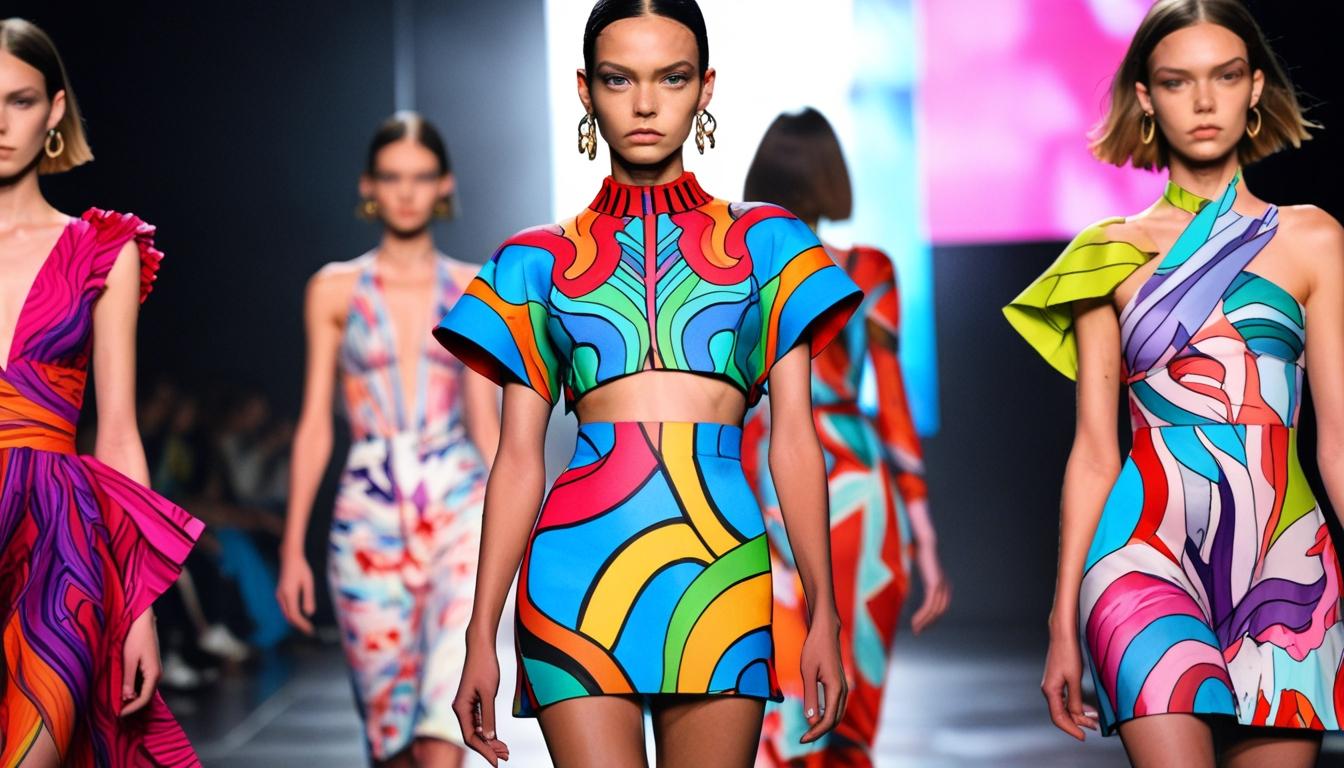When you delve into the history of Ellesse, you will uncover its origins in 1959, when Leonardo Servadio founded the brand in Italy, initially focusing on ski apparel. As ski culture flourished, so did Ellesse, particularly during the 1970s, propelled by innovative designs like the Jet Pant and endorsements from sports icons such as Chris Evert. In the 1990s, the Pentland Group acquired a majority stake in the brand, which allowed Ellesse to broaden its horizons and seamlessly merge fashion with sportswear. Today, Ellesse continues to resonate with contemporary trends and audiences, showcasing its ability to adapt and thrive over the decades. There's a wealth of history to explore regarding how this iconic brand evolved and maintained its relevance in the fashion landscape.
Founding Years
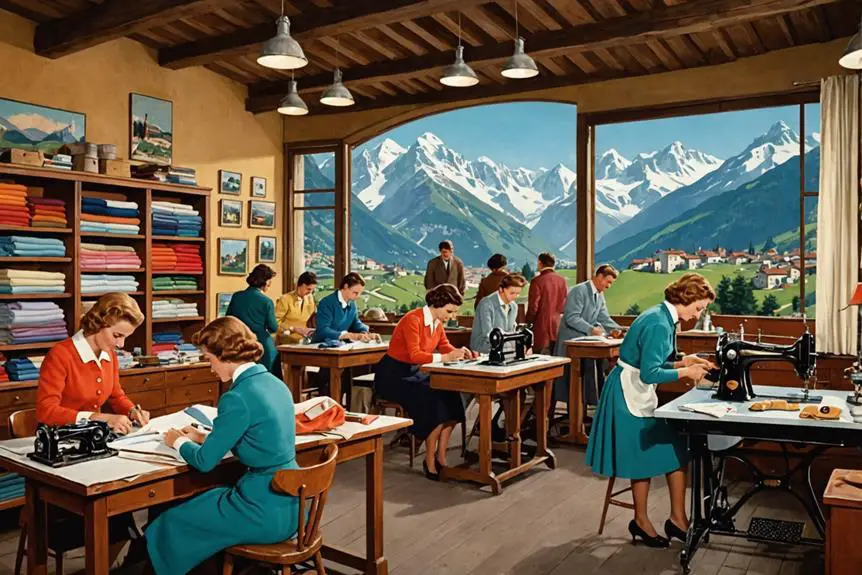
In the founding years of Ellesse, you can see a remarkable blend of innovation and style that set the stage for a brand that would redefine sportswear. Founded in 1959 by Leonardo Servadio in Perugia, Italy, Ellesse initially focused on ski equipment. This focus aligned perfectly with the era's growing interest in winter sports, allowing Ellesse to carve out a niche in the market.
Servadio's vision wasn't merely about functionality; he believed that looking good could enhance athletic performance. This philosophy led to the creation of innovative designs, such as quilted jackets and ski pants, which gained popularity in the 1970s. A standout moment came in 1968 with the introduction of the Jet Pant, a groundbreaking piece that merged stylish design with technological advancements in sportswear.
Ellesse's first logo, representing Servadio's initials as L&S, later evolved to resemble the brand name "ellesse," symbolizing its commitment to both fashion and function. This fundamental ethos laid the groundwork for a brand that continues to resonate with athletes and fashion enthusiasts alike, showcasing a unique intersection of style and athletic performance.
Rise in Popularity
During the vibrant 1970s, Ellesse emerged as a dominant force in the sportswear industry, driven by its innovative designs and strategic marketing. You can see how the brand's popularity skyrocketed thanks to its unique approach to sportswear, particularly with the launch of the Jet Pant, a standout in innovative skiwear that showcased Italian design and functionality.
The pivotal moment came in 1976 when tennis star Chris Evert donned Ellesse during her Wimbledon victory, instantly elevating the brand's profile in the sports world. This endorsement not only highlighted the brand's commitment to performance but also its flair for style.
Ellesse further solidified its reputation by celebrating Italy's triumph in the 1982 World Cup with fashionable team apparel, merging sports with street culture seamlessly. As the 1980s unfolded, the brand's fusion of sportswear and street fashion attracted a diverse demographic, appealing especially to youth culture. More recently, collaborations like the one with The Sidemen in 2021 tapped directly into contemporary digital spaces, showcasing Ellesse's adaptability and enduring popularity in an ever-evolving market.
Celebrity Endorsements
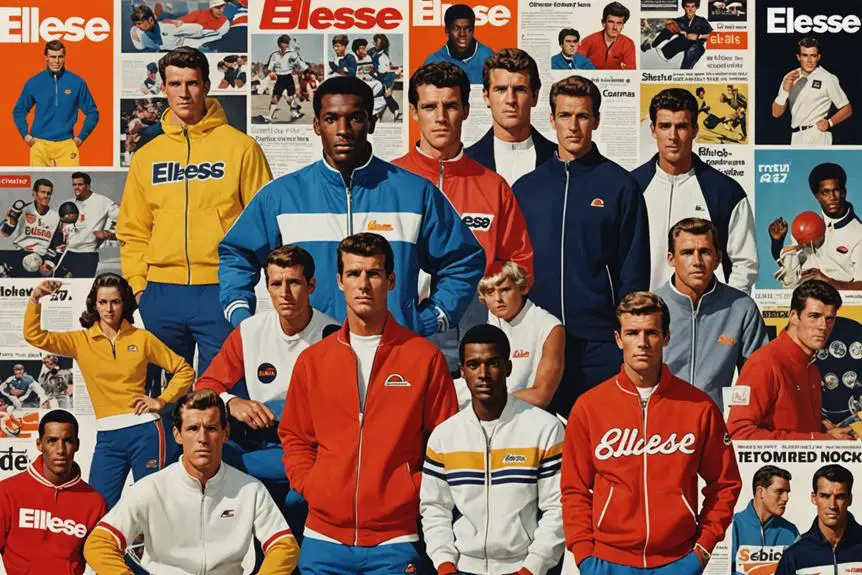
Celebrity endorsements have propelled Ellesse into the limelight, showcasing its versatility across various sports and cultural domains. When Chris Evert wore Ellesse during her iconic Wimbledon victory, the brand skyrocketed in visibility, cementing its status in tennis. This momentum continued as skiing legend Marc Girardelli donned Ellesse gear, reinforcing the brand's commitment to winter sports and appealing to a broader athletic audience.
The impact of endorsements didn't stop there. Formula 1 driver Alain Prost added a touch of glamour and speed to Ellesse, while the legendary Muhammad Ali brought charisma and cultural significance, elevating the brand's status within pop culture. Actors like Brigitte Nielsen and Roger Moore further diversified its appeal, merging the areas of sports and entertainment.
In the 1980s, Ellesse made a bold move into soccer by manufacturing kits for the New York Cosmos, a team synonymous with the sport's rise in America. This strategic decision not only expanded Ellesse's reach in the sports apparel market but also solidified its presence across various athletic disciplines. Through these endorsements, Ellesse became more than just a brand; it transformed into an emblem of style and performance.
Acquisition by Pentland Group
The momentum generated by high-profile endorsements set the stage for significant changes at Ellesse. In 1994, the Pentland Group acquired 90% of Ellesse shares for £20 million, establishing itself as the majority owner. This acquisition was not merely a business transaction; it was a strategic partnership that respected Ellesse's heritage while ensuring its evolution in the competitive sportswear market. Pentland had been Ellesse's UK distributor since 1981, laying a solid foundation for collaboration.
Post-acquisition, founder Leonardo Servadio retained a 10% ownership stake, allowing him to influence the brand's legacy while benefiting from modern corporate strategies. The Pentland Group's management brought a fresh brand direction, revitalizing Ellesse's visibility and expanding its international reach. With Pentland's expertise, Ellesse adapted to changing consumer preferences and trends, modernizing its product offerings without losing sight of its rich heritage.
This strategic move not only solidified Ellesse's position in the sportswear market but also aligned it with other notable brands like Berghaus and Speedo under Pentland's ownership. The acquisition marked a pivotal moment, ushering in a new era of growth and innovation for Ellesse.
Cultural Impact and Collaborations
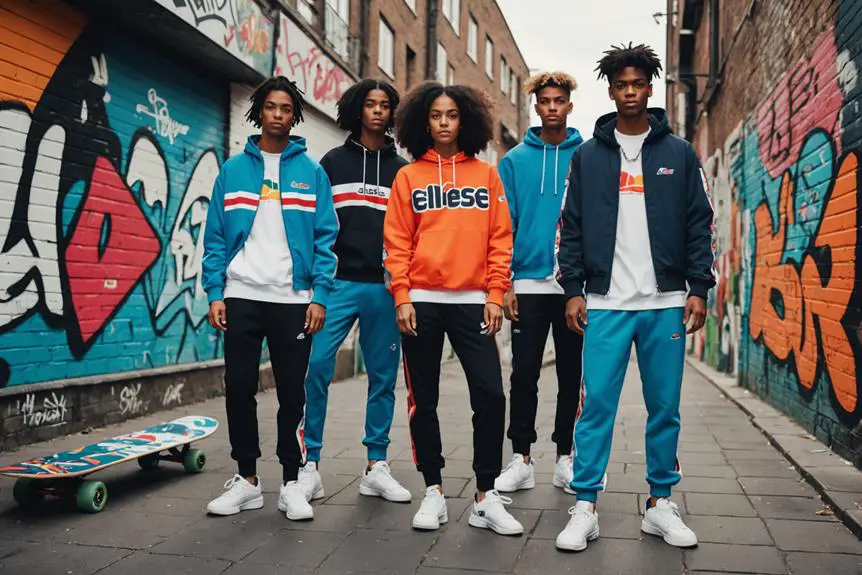
Ellesse has seamlessly woven itself into the fabric of popular culture, especially during the vibrant eras of the 1970s and 1980s, thanks to strategic endorsements from iconic athletes like Chris Evert and Boris Becker. This approach not only solidified its reputation in sportswear but also boosted its cultural visibility. Fast forward to today, and Ellesse continues to thrive through innovative collaborations that resonate with younger audiences.
In 2021, the brand partnered with TikTok for its AW21 collection, hosting a shoppable livestream concert that amassed an astonishing 4.2 billion hashtag views, showcasing its savvy social strategy. Further embracing youth culture, Ellesse teamed up with YouTube's Sidemen to launch SDMN, a clothing line that reflects contemporary trends.
Ellesse also ventured into luxury fashion through a capsule collection with Michael Kors, merging 1970s athletic styles with high-end appeal, featuring models like Emily Ratajkowski. Their collaboration with Tomorrowland Winter in 2022 blended ski apparel with a renowned music festival, illustrating Ellesse's adaptability. These strategic alliances not only amplify the brand's presence but also affirm its commitment to evolving within the ever-changing landscape of fashion and culture.
Fashion Innovations
Throughout its history, Ellesse has pushed the boundaries of fashion innovation, particularly in the domain of sportswear. The introduction of the Ski Jet Pant in 1968 marked a significant leap, combining innovative design with functional technology that transformed ski apparel. By pioneering tailored techniques in sportswear, Ellesse created ski trousers that seamlessly merged fashion with functionality, catering to both style and performance. Much like the evolution of FILA tags, Ellesse's designs have also reflected the changing tastes and needs of consumers over the decades. In the 1970s, the brand's penguin logo became a bold statement on garment exteriors, enhancing brand visibility and challenging the conventional design norms of the time. This daring move not only set Ellesse apart but also positioned it as a key player in the sportswear market. A notable collaboration with designer Charles de Castelbajac in 1980 further elevated Ellesse's standing, blending high fashion with sportswear aesthetics.
The 1990s saw Ellesse's commitment to innovation flourish with the development of the Pneu System and the Magic Air ski jacket, reflecting advancements in materials and technology. These innovations not only improved performance but also solidified Ellesse's reputation as a forward-thinking brand in the ever-evolving landscape of sportswear fashion.
Recent Developments
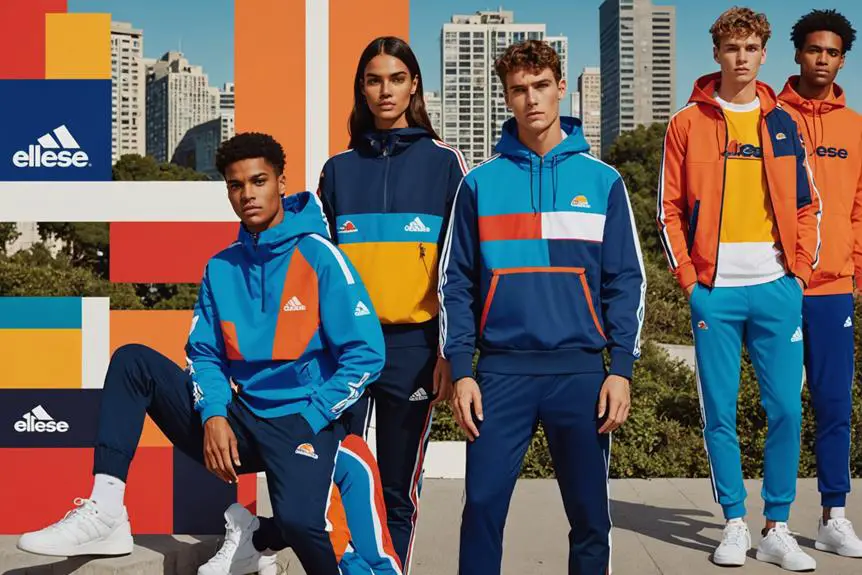
Recent developments in Ellesse's journey showcase a brand that's not just resting on its laurels but actively adapting to modern trends and consumer demands. In 2022, Ellesse made a significant move by partnering with Tomorrowland Winter, reintroducing ski apparel with a fresh snow collection that marries fashion with alpine sports. This strategic collaboration demonstrates Ellesse's commitment to evolving its product offerings.
Moreover, the brand's innovative marketing strategies have captured the attention of younger audiences. The AW21 collection featured a shoppable livestream concert on TikTok, engaging viewers and driving sales through direct interaction. This approach not only highlights Ellesse's flexibility but also its understanding of digital consumer behavior.
The collaboration with pop sensation Zara Larsson further amplified Ellesse's brand visibility, garnering an astounding 4.2 billion hashtag views and 92 million social engagements, ultimately winning the Best Social Strategy award at the Campaign Media Awards. As Ellesse continues to participate in cultural events and refine its marketing initiatives, it's clear that the brand is dedicated to maintaining relevance and connection with its audience, ensuring that its legacy in sportswear continues to thrive.
Frequently Asked Questions
Why Is Ellesse so Popular?
Ellesse's popularity stems from its stylish yet functional designs, appealing to your sense of fashion and practicality. Collaborations with cultural icons and a strong presence in sports elevate its status, making it a must-have brand.
What Does the Ellesse Logo Mean?
The Ellesse logo symbolizes a blend of tennis and skiing, reflecting passion for sports. Its vibrant colors and playful design promote authenticity, individuality, and body positivity, resonating with your desire for self-expression in athletic wear.
Is Ellesse Still Fashionable?
Yes, Ellesse is still fashionable. Its vibrant designs and innovative collaborations resonate with today's youth culture. By blending retro styles with modern trends, you'll find versatile pieces perfect for both casual outings and formal occasions.
Is Ellesse Making a Comeback?
Yes, you can see Ellesse making a comeback. Their innovative marketing, trendy collaborations, and nostalgic designs resonate with young audiences, blending sportswear with contemporary fashion, ensuring they remain relevant in today's ever-evolving style landscape.


